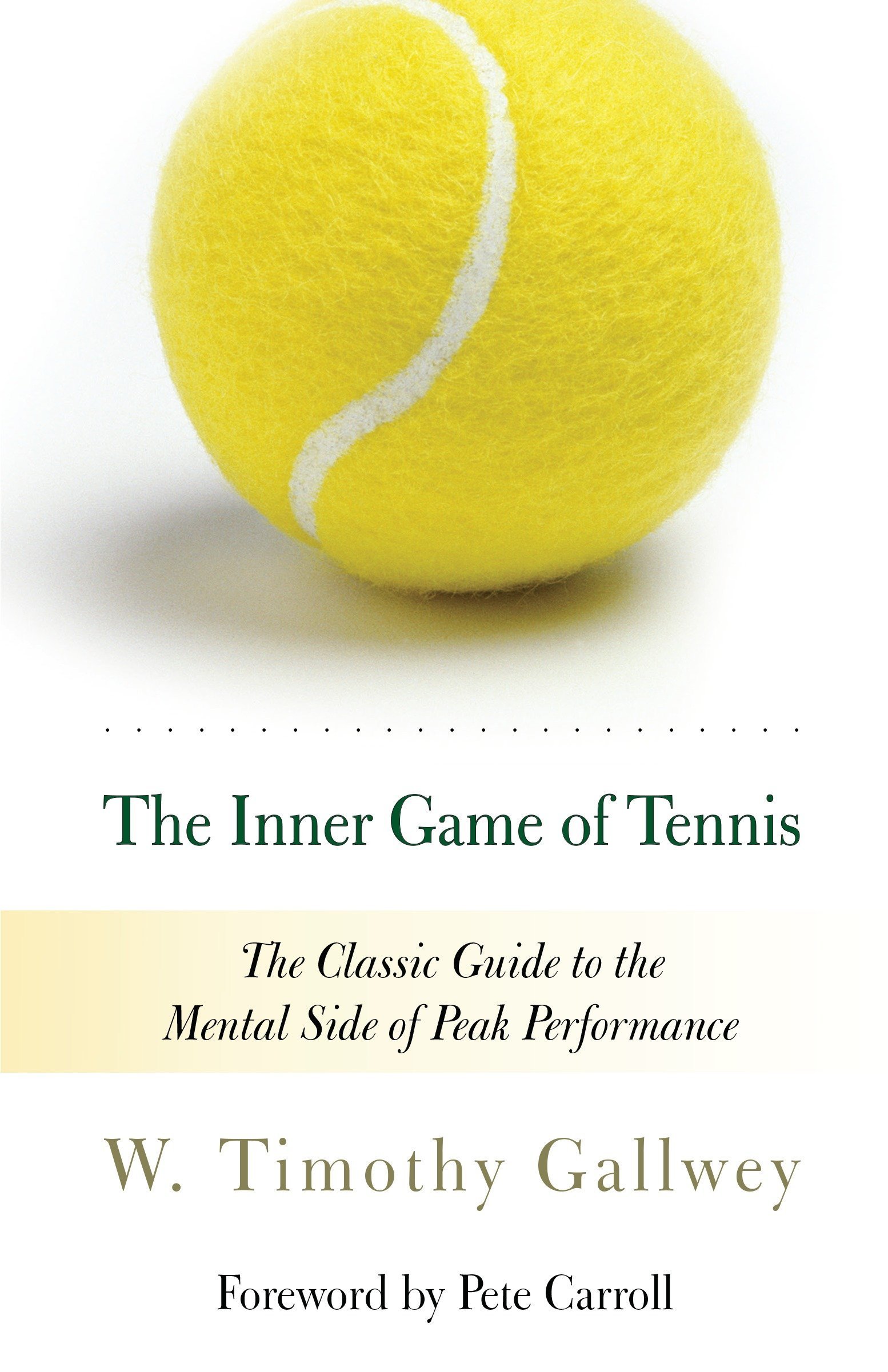The Inner Game of Tennis
Hardcover | Paperback | eBook | Audiobook
Book Reviews aim to provide succinct, thoughtful summaries of books I have read. They contain quotes from the book, thoughts from others, and also some thoughts of my own. Typically they will be structured in the following order: author, introduction, message and purpose, remarkable chapter, and conclusion. This review will cover The Inner Game of Tennis, a book that uses tennis as a medium to unlock the mental side of peak performance.
Author
W. Timothy Gallwey
Introduction
First published in 1972, The Inner Game of Tennis is described by one of the greatest women's tennis players of all time Billie Jean King as her "tennis bible." Gallwey starts by explaining that every game is composed of two parts: the outer game and the inner game. The outer game is played against opponents on the court, while the inner game is the battle within ourselves as we try to overcome self-doubt and anxiety. This book breaks down the difference between the two and how to become the best version of yourself you can possibly be.
Message and Purpose
The Inner Game of Tennis reveals Gallwey's revolutionary approach to developing concentration, working on superior gamesmanship, and breaking bad habits. While tennis is used as a model, the message and purpose of the book allows the reader to trust themselves more and maintain clarity of mind, giving a clear psychological advantage to anything in life. The outline of the book is:
Chapter One: Reflections on the Mental Side of Tennis
Chapter Two: The Discovery of the Two Selves
Chapter Three: Quieting Self 1
Chapter Four: Trusting Self 2
Chapter Five: Discovering Technique
Chapter Six: Changing Habits
Chapter Seven: Concentration: Learning to Focus
Chapter Eight: Games People Play on the Court
Chapter Nine: The Meaning of Competition
Chapter Ten: The Inner Game Off the Court
The Inner Game of Tennis is surely a guaranteed way to positively change the way you play tennis, but it's even more sure to positively change the way you approach everything in life.
Remarkable Chapter
The ninth chapter about competition is one I find myself going back to long after I finished the book. It discusses the myths around competition and what the ultimate purpose is of it. Gallwey arrives at this startling conclusion:
"True competition is identical with true cooperation. Each player tries his hardest to defeat the other, but in this use of competition it isn't the other person we are defeating; it is simply a matter of overcoming the obstacles he presents. In true competition no person is defeated. Both players benefit by their efforts to overcome the obstacles presented by the other. Like two bulls butting their heads against one another, both grow stronger and each participates in the development of the other."
He elaborates by how this approach can change one's attitude in a tennis match:
"Instead of hoping your opponent is going to double-fault, you actually wish that he'll get his first serve in. This desire for the ball to land inside the line helps you to achieve a better mental state for returning it. You tend to react faster and move better, and by doing so, you make it more challenging for your opponent. You tend to build confidence in your opponent as well as in yourself and this greatly aids your sense of anticipation. Then at the end you shake hands with your opponent, and regardless of who won you thank him for the fight he put up, and you mean it."
Conclusion
It's no surprise that Gallwey's multi-million bestseller has been read and cherished by so many outside the tennis realm. The lessons and insight from The Inner Game of Tennis are seemingly endless and wonderfully applicable to anyone who reads it. It's a book that is classic, yet modern; simple, yet innovative; succinct, yet powerful. The Inner Game of Tennis is bound to improve your tennis game and general approach to life, and is a terrific read you won't regret.
